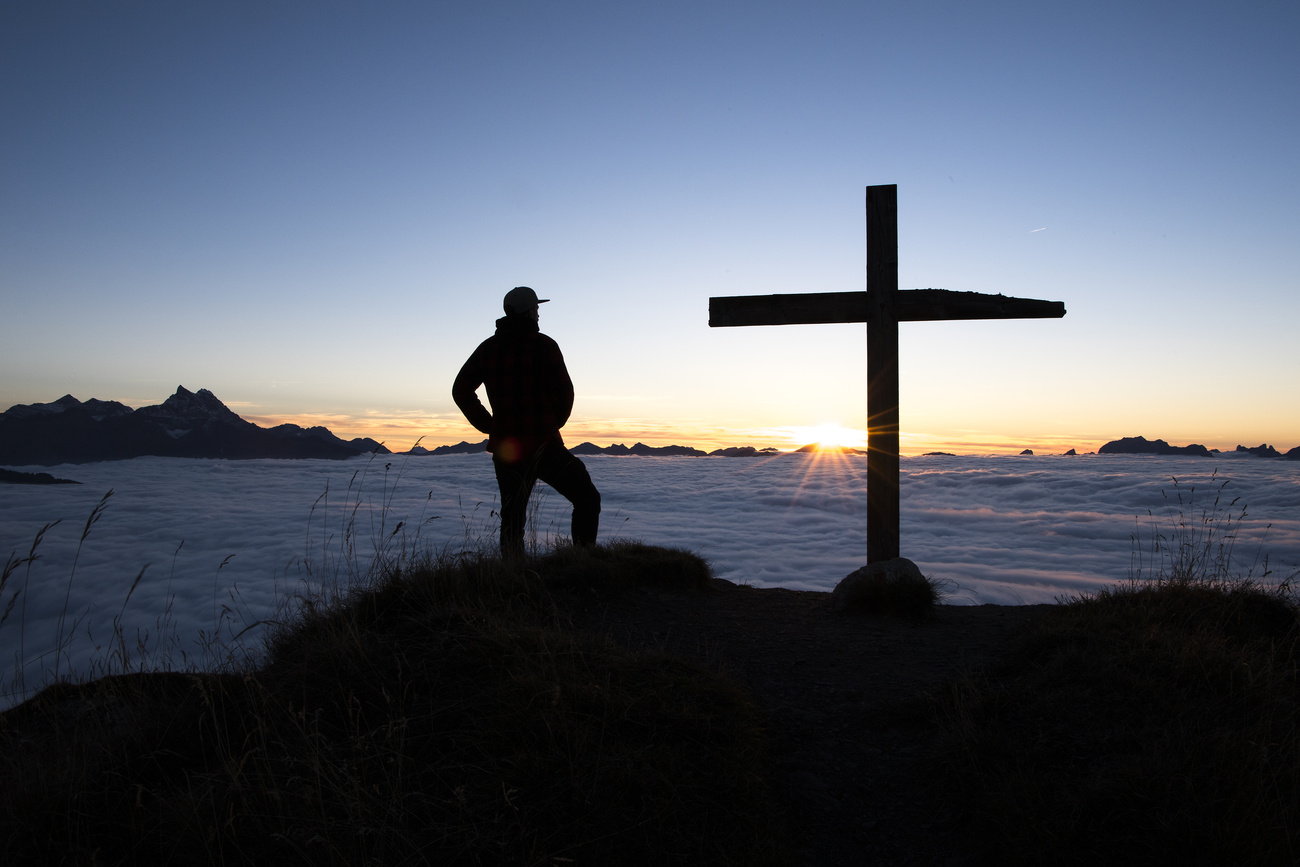
Mountains have our cross to bear
Besides great views, have you ever wondered what’s at the top of some of the highest peaks in the Alps?
In search of stories worth sharing with you, I read how a small group of mountain guides had re-erected a cross on the Dufourspitze, the highest point of Switzerland at 4,634m (15,203ft).
It got me wondering how controversial it is – if at all – to place such religious symbols on summits.

I was also reminded of two friends for whom climbing is not a religious experience but a deeply spiritual one.
But before I get to them, let me tell you about the cross. The aluminium monument that previously stood on the peak marking the border between Switzerland and Italy had been uprooted two years ago, found twisted at the foot of the mountain’s southwest flank.
The new cross was assembled in Italy with the pieces that could be salvaged from the old one. On September 9, a helicopter carried it to the summit where a small team of guides from both countries bolted it in place.
An inscription in German and Italian proclaims that at this height there are “no rules”, just the “freedom of the wind” and such amazing views that all “barriers are overcome”. Indeed, a lofty vision, but not without its religious trappings. A small golden Madonna is placed inside the cross.
One of the guides, president of the local Swiss guiding association, declared that “summit crosses belong to our mountains.”
Do they?
In the Bavarian Alps in the summer of 2016, someone attacked the crosses on three summits with an axe. The person or persons were never caught, nor did they leave any hints as to their motive.
Speaking about the unusual incidents in a newspaper interview with Germany’s Süddeutsche Zeitung, legendary mountaineer Reinhold Messner said he was opposed to such acts of vandalism but added that mountains shouldn’t be used for religious purposes, since they belong to all of humanity.
That was echoed a couple weeks later when a Swiss artist hired a helicopter to fly a crescent moon sculpture to the top of a mountain in the eastern Appenzell region, where it stood for a few days. He said it was absurd to place religious symbols on mountains so he wanted to “put up an equally absurd contrast”.
According to Messner, crosses only came into fashion as summit decor two centuries ago, about the same time as we began naming peaks after prominent individuals, another issue that is not without controversy as I wrote a couple months ago.
I’ve been wondering if alpinist Dan Moore even notices whether the peaks he climbs are adorned with crosses. When I asked him recently how long he spends at the top, he replied: “Sometimes I don’t even break stride.”
Dan is a philosopher-climber, which is why I engaged him to write an article for us, explaining why he climbs. I am excited to share his insights with you. In one sentence he describes his deep connection with the mountains, while in the next downplays his remarkable achievements in typical English fashion as nothing more than “a long detour from bakery to pizzeria”.

More
Why the high point of climbing is not the summit
Judith Safford is equally passionate about the mountains. A former CEO of the International Climbing and Mountaineering Federation, Judith has overcome a debilitating disease over the years as well as cancer to get back into climbing.
She turned 60 this year and recently summited the Eiger External linkfollowing the Mittellegi route. Three years ago, she wrote a column for us describing how she fought the autoimmune disease known as Ankylosing Spondylitis to prepare for and successfully ascend 16 peaks in five days.
Of course, there is an easier way to the top. Just last week we published photographs by Hans Peter Jost of crowds gathered at or near an alpine summit. The mechanical means they used to get there has made the Alps accessible for everyone.

More
Alpine queuing: join the crowds
Is that a good thing? Have a look at the pictures and let me know what you think. dale.bechtel@swissinfo.ch
Sign up! Move mountains, and their stories, into your inbox
Correction: the original version of this story stated that the new cross was placed on the summit on September 11, when in fact it was September 9.

In compliance with the JTI standards
More: SWI swissinfo.ch certified by the Journalism Trust Initiative





























Join the conversation!